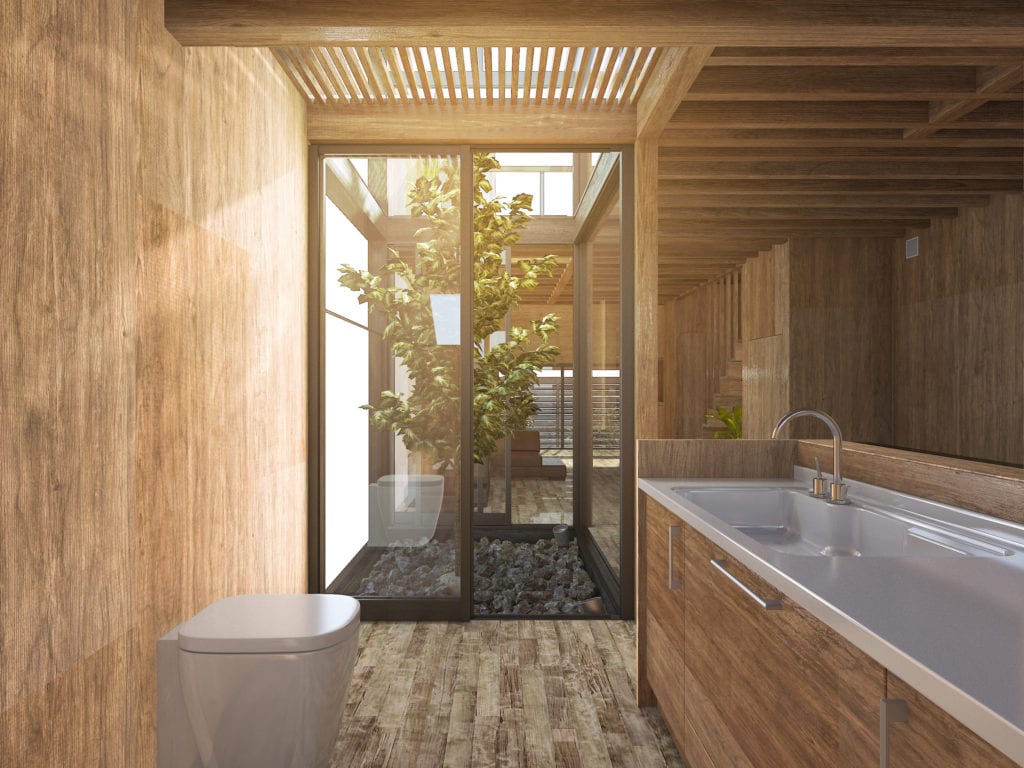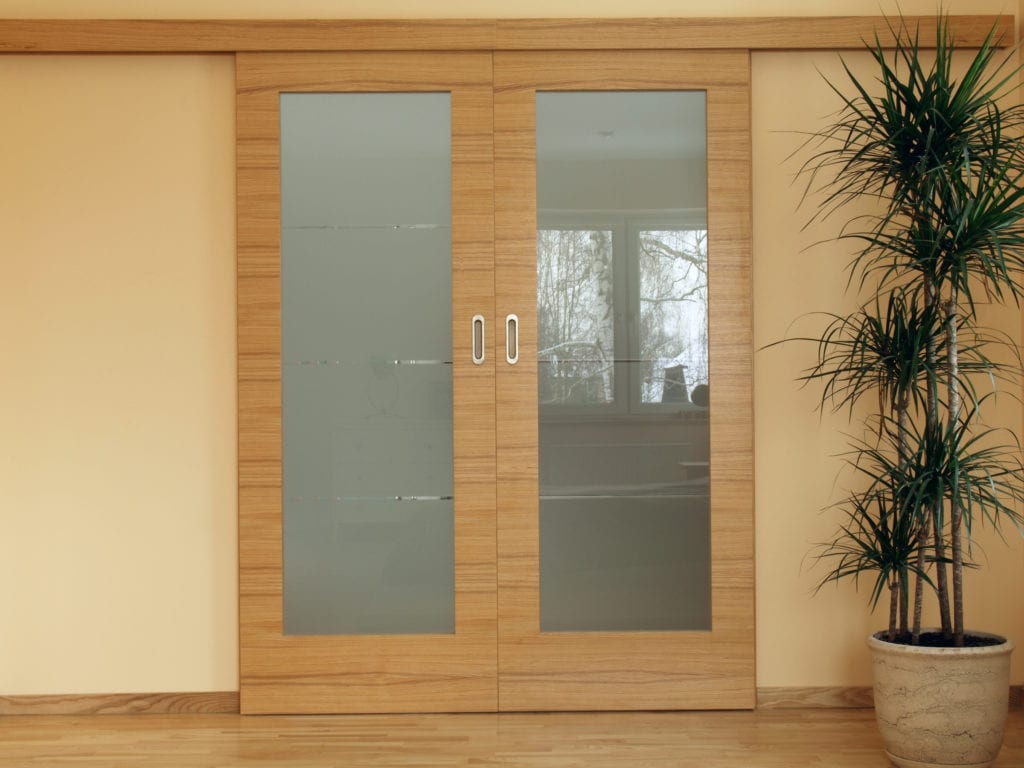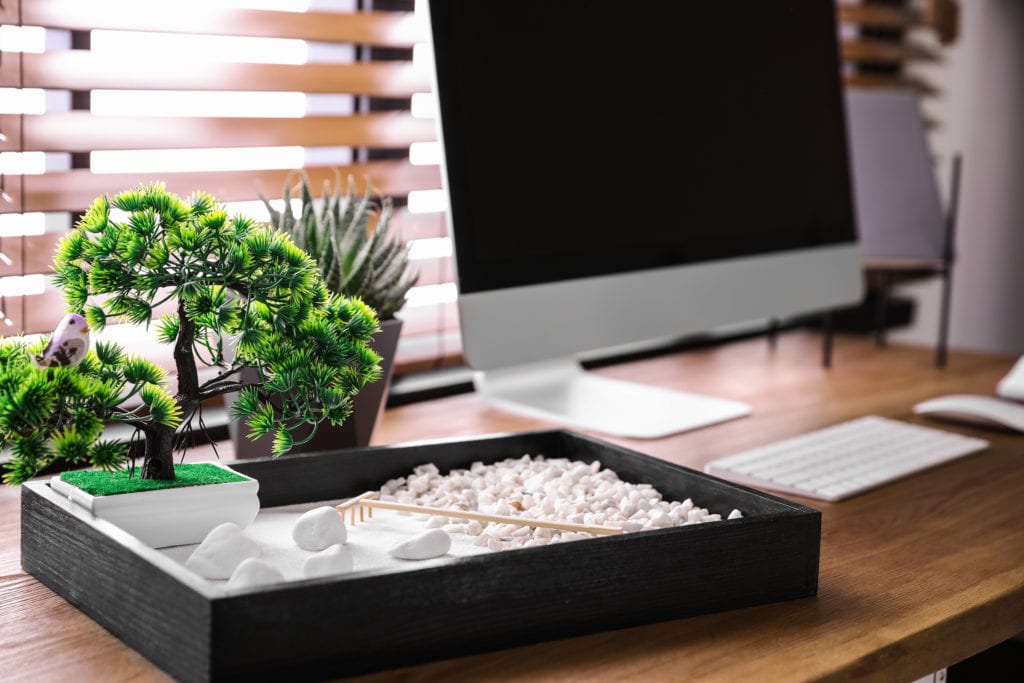Japanese Decorating Ideas Living Room
 dit26978 / stock.adobe.com
dit26978 / stock.adobe.com
dit26978 / stock.adobe.com / Shop These Products Now: Modern Toilet – Faucet – Tree Plants – Vanity Cabinet
One word sums it up: Zen. Yes, peaceful simplicity surrounds the modest designs of Japanese culture. Thousands of years steeped in tradition have influenced Japan's architecture and interior design aesthetic, resulting in a serene and very cultural interior design.
Japanese style evolves around clean and uncluttered living, holding tightly to balance, order, ancient customs, and a love for natural beauty.
When one understands the ancient tea ceremonies and lifestyles of the Japanese— the culture immediately becomes very endearing and worth replicating in our everyday lives. If for any other reason, let's mimic Japanese style in order to bring a little bit of their well-honed Zen into our own lifestyles. Couldn't we all use a little bit of peace and harmony in our homes?
Since Japanese interior design has this tranquil decorating touch perfected, let's look at 10 ways to add some of this becalming style into your home today. You may want to visit 30 Of The Most Ingenious Japanese Home Designs, as well.
1) Elements of Nature in Japanese Style Interiors
Japanese culture is saturated in love and respect for nature. The best way to maintain a strong connection with the natural world is to bring nature indoors.
Adding traditional Japanese plants, such as bonsai and bamboo, into your home will give it a small Japanese cultural touch. Really though, you can add any sort of deep greenery and still achieve a similar style. Consider adding sleek plants such as palm or orchid to your home. It is not typical to see a lot of colorful floral arrangements in a Japanese home, so whatever plant you choose, keep it simple, natural, and green.
Japanese homes also bring nature inside through large, expansive windows that allow a view of nature from every angle. Like this bedroom, featured below, the large sliding glass door brings serene, natural views indoors. Open up your home to the wonders of nature today.
2) Soaking Tubs Are Important in Japanese Interior Design
The serene sounds of water bubbling will fill your meditative ears and immediately have a calming effect. Just like plants, elements of water are imperative in the Japanese home.
Ofuro, translated as a bath in Japanese, is a tranquil tradition that is well-worth adding to your home. Japanese soaking tubs are small, deep tubs that usually have some sort of bench seat. These tubs are becoming an Eastern trend that many health-conscious homeowners are flocking for.
Turn your bathroom into an enlightened escape by adding one of these soaking-style tubs. It is the ultimate way to have East meet West, and create a spa-like environment in your home.
 Photographee.eu – stock.adobe.com / Shop These Products Now: Planter Pots – Tree Plants – Sliding Doors
Photographee.eu – stock.adobe.com / Shop These Products Now: Planter Pots – Tree Plants – Sliding Doors
3) Japanese Style Sliding Doors Or Screens
An authentic Japanese screen is called a Shoji, and it is an essential design element in Japanese homes.Due to the high cost of housing, Japanese homes tend to be small and a lot of residents rent apartments, so conserving every square inch of space is essential. Unlike doors, these Shoji's slide back and forth, saving space that a swinging door would take up.
An authentic Japanese screen is usually made of fine translucent paper held inside a wooden frame. However, modern versions of these screens can be found online and are usually made of glass panels inside a wooden grid.
Another key element of these screens is that, unlike doors, they do not block the natural light and views of nature. Replacing a large expanse of wall with a glass-paneled sliding door could be a great way to incorporate this style into your own home.
4) Elements of Wood and Bamboo in Japanese Interior Design
One of the best ways to harmonize with nature is to add natural wooden elements into your home. Japanese culture is known for using wooden elements throughout their homes.
Walls, doors, screen grids, and frames are all made of natural wood. The most common woods being western versions of maple, cypress, hemlock, and red pine. Bamboo is also a popular wood used for decorative purposes, as can be seen in the image below.
Essentially, the texture of the wood can be seen everywhere in a Japanese home. Try bringing these natural wooden elements into your home by adding a bamboo floor, or wooden screen. You will love the serene calming effect that clean-lined wood elements can add to your home.
5) Japanese Style Entryway
The Japanese entry is called a genkan. This is the area that greets visitors and also the place where shoes are immediately taken off and usually replaced with indoor slippers.
As you notice in the image below, the entryway has a shelf or cabinet called a getabako that is used for storing shoes (tips of the shoes are usually placed pointing outwards, unlike the image below). As you will also notice, the entry is simple in design with wooden elements and a lot of natural lighting.
Stone tile flooring is also popular in these homes, especially the entryways. In order to mimic this design, we suggest copying the clean, simple lines of Japanese design. Keeping your entryway uncluttered may be the biggest challenge (especially for North American homeowners who tend to house some clutter in their entry's such as mail, shoes, etc..).
6) Japanese Style Furniture
While a lot of authentic Japanese homes do not segregate furniture-filled rooms for certain purposes such as a sitting room or TV room, we can still mimic Japanese simplicity into our sectioned-off homes.
Most of Japan's furniture is low to the ground, or when it comes to tea ceremonies, floor cushions usually forgo furniture. Mimicking this design aesthetic can be as simple as incorporating low-to-the-ground furniture into our homes, such as the simple side tables and bed frame featured in the image below.
Or we could be more authentic by surrounding a low plank table with floor cushions—using this as a means to dine would be very bona fide, and maybe even a bit romantic. Whether you want more of an East meets West design, or you want to be extremely authentic — Japanese style furniture can easily be incorporated into your home.
7) Minimalist Japanese Design Principles
As you can probably already tell, Japanese design is clean and minimalist. Clutter is not contained in these homes. As we discussed above, sometimes there isn't even much furniture in an authentic Japanese home.
How can you achieve this design aesthetic and still have a home full of furniture and modern comforts? The trick is to keep your design simple and uncluttered. Most modern design aficionado's will find this style easy to replicate.
Furniture should be modern, clean-lined, and made of natural wood. Lighting should be angular and modern (as seen in the kitchen below). Or lighting could mimic an authentic Japanese lantern style, as well. Overall, look to modern living designs to replicate this clean, simple style. Everything should have a purpose and a place — nothing is out of order or lacking function. Studying the art of Feng Shui may also help you design your minimalist interior.
8) Open Space and Natural Lighting Are Key To Japanese Design
As mentioned above, open space and minimalist design principles reign in Japanese design. So let's look at another way this design aesthetic is achieved — Natural Lighting.
Natural light abundantly fills these homes, bringing with it serene views and colors of nature. What could be a better way to light up your home? Large, expansive windows and ceiling openings such as skylights, are the perfect way to add this bright design into your own home.
Heavy draperies are also a big no, no. All they do is block this natural light. Try keeping your windows clear of any obstruction, but if this is not possible, then opt for a simple bamboo shade or sheer, gauzy curtain panels. Natural light — what a bright way to light up your home!
9) Popular Colors in Japanese Design
In keeping with the natural beauty of the outside world, Japanese homes typically contain simple colors from nature. Predominant colors are derived from the browns of wooden elements, and the greens of plants. Flooring is either wood or grey stone tile, and most walls are replaced with screens that are covered in opaque paper.
This design results in a simple color palette that is very neutral. How can we mimic this in our own interiors? Try incorporating these natural wooden elements through wood shelving, wall panels, and flooring, or add the grey-tones of stone in your floors or even your furniture.
Also, don't forget to add plenty of green through natural houseplants. Simplicity is key when choosing your color palette. Look outside your windows to see what natural color elements you can incorporate in your home today.
 New Africa – stock.adobe.com
New Africa – stock.adobe.com
Shop These Products Now: Writing Table – Small Pots – Table Decor
10) Create a Zen Meditating Space
Try diving deep into the peaceful Japanese culture by creating a truly serene space in your home that is meant for meditating, having tea, or doing yoga.
Look at the room featured below. It is an amazing nod to Japanese culture and would make a perfect place to have Japanese tea. Find a quiet place in your own home to layout a floor cushion for meditating or just sitting and relaxing. Don't forget to add a water feature, so its trickle will drown away all distracting noises.
Paint the room in calming greens or browns, add some live greenery, play some calming music, and Voila! You have your very own, very Zen Japanese hideaway.
While you may not have grown up surrounded by the ancient Japanese culture, you can still fall in love with its very peaceful design aesthetic that is deeply rooted in history.
In order to achieve this style, mimic its clean, simple, and minimalist design throughout all the rooms in your home. Add to your home: natural wood elements, simple greenery, natural lighting, modern furnishings, water features, a deep soaking tub, plush floor cushions, sliding doors or screens, a room for mediating, and plenty of colors derived from nature.
All of these small pieces pull your home together into a rich Japanese interior design that speaks to its culture and love of nature.
Would you like to have a home designed in this style? If so, what would you add to your home to achieve this look?

Japanese Decorating Ideas Living Room
Source: https://www.mymove.com/home-inspiration/decoration-design-ideas/ways-to-add-japanese-style-to-your-interior-design/
Posted by: hallplover.blogspot.com

0 Response to "Japanese Decorating Ideas Living Room"
Post a Comment